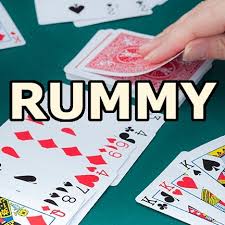Variations Of Rummy, a game celebrated for its strategic depth and engaging gameplay, has captivated players for generations. Its core mechanics—forming sets and runs—are simple yet versatile, allowing for a range of creative variations. As the game has evolved, numerous versions have emerged, each adding its own twist to the traditional format. In this article, we will delve into several popular variations of Rummy, exploring their unique rules, gameplay, and appeal.
1. Gin Rummy
Overview: Gin Rummy is a fast-paced, two-player version of the classic game, known for its emphasis on strategy and skill.
Rules:
- Players are dealt 10 cards each from a standard 52-card deck.
- The goal is to form melds (sets and runs) and minimize the total value of unmelded cards.
- Players take turns drawing and discarding cards, aiming to declare “Gin” by forming all cards into melds.
Distinctive Features:
- Suited for two players.
- Focuses on reducing the value of unmelded cards, adding a layer of strategy.
2. Indian Rummy
Overview: Indian Rummy is a popular variant in South Asia, played with two decks of cards and often featuring jokers as wild cards.
Rules:
- Players are dealt 13 cards each from two shuffled decks.
- The objective is to form valid sets and runs, with jokers used as wild cards.
- Players must lay down a minimum number of melds before declaring and going out.
Distinctive Features:
- Utilizes two decks and jokers.
- Adds complexity and strategic depth.
3. Kalooki (Kaluki)
Overview: Kalooki, also known as Kaluki, is a Rummy variant that incorporates two decks and jokers, offering a more complex and strategic gameplay.
Rules:
- Players are dealt 13 cards each from two decks.
- Jokers act as wild cards, used to complete sets and runs.
- Specific rules for declaring and going out vary by region.
Distinctive Features:
- Inclusion of jokers as wild cards.
- Played with two decks, adding complexity.
4. Canasta
Overview: Canasta is a Rummy-like game that originated in Uruguay, focusing on forming melds of seven or more cards of the same rank, known as “Canastas.”
Rules:
- Played with two decks of cards, including jokers.
- Players aim to form Canastas and other melds.
- Unique scoring rules and card combinations apply.
Distinctive Features:
- Emphasis on forming Canastas.
- Unique scoring and card usage rules.
5. Rummikub
Overview: Rummikub is a tile-based game combining Rummy elements with a board game twist. It uses numbered tiles rather than cards.
Rules:
- Players start with 14 tiles from a pool of 106 tiles, including numbers and jokers.
- The goal is to form sets and runs with the tiles.
- Players draw and discard tiles to complete their melds and empty their rack.
Distinctive Features:
- Use of tiles instead of cards.
- Emphasis on rearranging tiles on the board.
6. Rummy 500
Overview: Rummy 500 introduces a point-based system and flexible gameplay, named for the 500 points needed to win the game.
Rules:
- Players are dealt 13 cards each, aiming to form melds and score points.
- Players can draw from the discard pile and form melds with previously discarded cards.
- The game continues until a player reaches 500 points.
Distinctive Features:
- Flexible meld rules and scoring system.
- Strategic play with discarded cards.
7. Oklahoma Rummy
Overview: Oklahoma Rummy features unique rules related to the wild card and initial deal.
Rules:
- Played with a standard 52-card deck.
- The wild card is determined by the first card dealt.
- Players aim to form sets and runs, using the wild card strategically.
Distinctive Features:
- Wild card determination based on the initial deal.
- Adds an element of unpredictability.
8. Contract Rummy
Overview: Contract Rummy involves a series of rounds, each with a specific contract or requirement for melding cards.
Rules:
- The game is played in a series of rounds, each with a defined contract (e.g., forming two sets and one run).
- Players must complete the contract to lay down their melds and win the round.
- The game continues until a player meets the contract requirements for all rounds.
Distinctive Features:
- Emphasis on meeting specific contracts.
- Structured gameplay with varied objectives.
9. Kalaha Rummy
Overview: Kalaha Rummy, also known as Kalaha or Mancala Rummy, incorporates elements of both Rummy and Mancala, adding a unique strategic twist.
Rules:
- Played with a standard deck of cards.
- Players use a board with pits similar to Mancala to manage their hands.
- The objective is to form sets and runs while strategically moving cards between pits.
Distinctive Features:
- Combines Rummy with Mancala mechanics.
- Adds a strategic layer with the use of a board.
Conclusion
Rummy’s versatility is showcased through its numerous variations, each offering a unique take on the classic card game. From the quick and strategic Gin Rummy to the tile-based Rummikub and the contract-based Contract Rummy, these variations provide diverse experiences that cater to different preferences and playstyles. Whether you’re a seasoned Rummy player or a newcomer eager to explore, these variations offer engaging and enjoyable ways to experience one of the most enduring card games in history.




